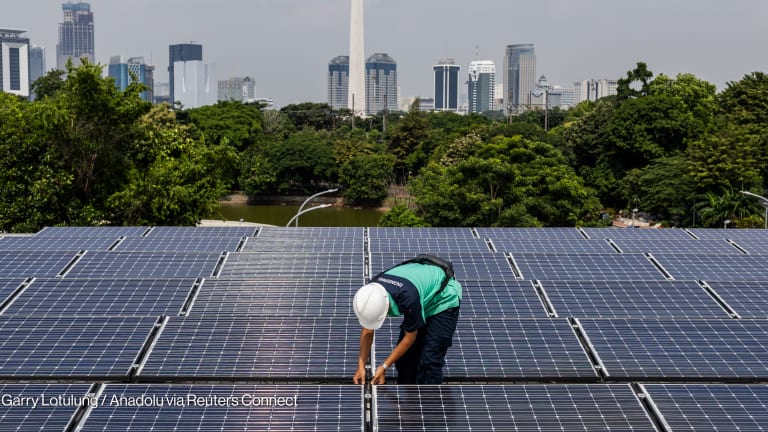
This year’s climate summit will issue another urgent call to curb global carbon emissions — and rightfully so. Country climate plans around the world — known as nationally determined contributions — are dangerously short of the commitments made at the 2015 Paris climate summit.
The latest Intergovernmental Panel on Climate Change report calls for a radical and immediate change of direction to save millions of lives and prevent catastrophic climate change. In Katowice, Poland, delegates from over 190 countries are coming together with a crucial task at hand: to finalize all required details to operationalize the Paris agreement.
More on COP24:
► Q&A: The key role of indigenous people in global climate change efforts
► Engineers sound alarm about climate change and infrastructure
Sign up here to get daily briefings from COP24 in your inbox.
COP24 will also give countries in Eastern Europe and Central Asia a chance to show how far they have come to fulfill their own commitments.
In some respects, the record is dim. In Central and Eastern Europe, emissions per capita are on the rise. The Czech Republic, for instance, has already overtaken Germany on that measure, while Poland will likely reach that stage within three or four years. Old infrastructure is part of the problem. For instance, 50 percent of Kazakhstan’s energy-related infrastructure is more than 30 years old. This is very much the case across the region.
Dependence on dirty fuels — many of them subsidized — is another culprit. Five of the six EU member states where coal accounts for more than one-third of all power are in Eastern Europe. The Caspian basin countries also have abundant and relatively cheap oil and natural gas reserves, while coal mining still thrives in parts of Southeast Europe.
Yet, a closer look reveals a more balanced picture. Many countries have attempted to achieve significant breakthroughs on energy efficiency and renewables.
Albania, Georgia, Kyrgyzstan, and Tajikistan generate almost all their electricity from hydropower. Baltic nations, Bulgaria, Croatia, and Romania have met their individual 2020 EU targets for increasing the share of renewables in total energy consumption. In Ukraine, biomass is on a sharp upward trajectory.
Growing numbers of international banks and companies are looking at green investments in the region. For example, large funders such as the European Bank for Reconstruction and Development have divested themselves from coal and are helping countries switch to cleaner fuels.
But there are hurdles ahead. Energy markets are still opaque, making market entry for new players extremely difficult. Regulatory reforms are often incomplete. Project developers struggle to find the needed finance.
Still, for the economies of Eastern Europe and Central Asia, the transition to clean energy presents not just an opportunity to modernize and secure their energy infrastructure. It’s also a once-in-a-lifetime chance to invest in manufacturing, jobs, food security, health, and poverty elimination by 2030.
The longer these countries wait to comply with the Paris goals, the steeper the rate at which emissions will need to decrease. Given that emissions need to peak by 2020 to stay within the 1.5°C or 2°C trajectory, they must achieve three immediate wins.
1. Increase the level of ambition and strengthening their climate commitments by 2020. Across the board, nationally determined contributions are failing to reach the emission cuts needed to comply with Paris requirements. Only two NDCs explicitly indicate financing needs for implementing climate actions.
2. Eliminate fossil fuel subsidies, which averaged $45 billion for 2015 in the region’s middle-income countries alone. In addition to spurring investments in renewables and energy efficiency, cutting fossil fuel subsidies will make more funds available for other uses.
3. Immediately work to reduce risk in the energy efficiency market. Lowering financing costs by addressing barriers to investments is an important task for policymakers seeking to scale up support in that area. Armenia, for instance, is looking to unleash $100 million worth of public and private investment to retrofit buildings with energy efficient heating.
U.N. Development Programme has been working to support 17 countries and territories in Eastern Europe and Central Asia to prepare and implement their NDCs and to switch to greener economic models. From creating a market for electric cars in Moldova to mapping solar energy opportunities in Montenegro, UNDP has helped combine clean energy with stronger economies and higher living standards.
Eastern Europe and Central Asia’s transition to a cleaner future requires a radical change in mindsets and courageous financial and political investments in the short term. From a regional perspective, this climate summit must therefore be much more than a show of goodwill.
Sign up here to get the latest information and inside stories from COP24 in your inbox.








